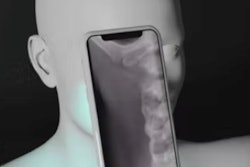
Imaging leaders don't need to be imaging informatics experts, but they do need to gain a basic understanding of IT to succeed in today's world of radiology, according to a presentation Tuesday at the AHRA 2022 meeting in Phoenix.
 Kenneth Fazzino of National Spine and Pain Centers.
Kenneth Fazzino of National Spine and Pain Centers.Every purchase in radiology today involves at least some level of IT, and it's expected now that imaging leaders must learn the important nomenclature and concepts when interacting with the IT department on projects, said Kenneth Fazzino, vice president of ancillaries and optimization at National Spine and Pain Centers in Palm Harbor, FL.
"When you start jumping into IT it's an expanded knowledge base that you have to become familiar with," he said. "There are common terms of technology that need to be understood, because it's the expectation outside of the department that you're going to at least know this level."
Radiology informatics encompasses the RIS, PACS, voice recognition/dictation software, and the electronic medical record (EMR)/electronic health record (EHR). It's critical to understand that the DICOM standard supports movement of images, while the HL7 standard applies to movement of text information, Fazzino said.
"HL7 is about the words, and DICOM is about the pictures," he said.
In addition to DICOM and HL7, other important acronyms and terms to understand include the following:
- ORD (Order)
- ORU (Observation results)
- ORM (Order entry, department)
- Interface
- Integration
- API (Application programming interface)
- LDAP (Lightweight directory access protocol) single sign-on
- Gateway, Cloverleaf
- Servers
- Routing
- IP (internet protocol) address
- EMR/EHR (electronic medical record/electronic medical record)
- Templates/macros
- Mapping
- ADT (Admit, discharge, transfer)
- MPI (Master patient index)
"These acronyms and terms are going to be tossed out in these meetings continuously," he said. "You don't have to know exactly how it works, but you have to be at least be like 'ok, I've heard that term.' "
And then, you need to know the person on your team who has the knowledge set to help you on the project, Fazzoni said.
Roadmap
When embarking on a radiology IT initiative, it's important to take the time to first map out the current state of operations and the projected new state of operations, according to Fazzino.
"If you don't have a flow of what you're doing today, and then what you're going to be replacing it with, you're going to forget something and break it," he said. "And you're not going to know until it's broken that day and it could be catastrophic. There are people who have lost jobs over this very quickly."
Also, it's vital to collaborate with departments outside of radiology and make sure support is available onsite, he said. In addition, it's also important to ensure that the imaging modalities and PACS are well-prepared, including performing data migration and cleanup of previous exam codes, according to Fazzino.
"Your goal is virtually no disruptions to the [radiology] workflow," he said. "That's probably a lofty goal, but you do that as best you can."
Furthermore, there should be no critical issues in the way of getting imaging exams completed, from patient check-in all the way to the final report, he said. All devices such as printers and scanners also need to be set up.
"People forget because we don't print as much, but the ICU might get a printout of any stat chest x-ray so they don't have to go and look at the machine," he said. "I don't know how many places are using that, but you need to make sure. We haven't broken away from paper yet."
A cautionary tale
Fazzino shared a cautionary tale of a hospital rollout of voice recognition software in which the referring physicians were not informed of the change. The referring physicians were used to listening to a preliminary report, which was eliminated following adoption of voice recognition.
"They went bananas," he said.
Although some might say they don't have time for pre-rollout testing, it's vital that this testing be completed, he said.
"If you don't test now, you will pay the price later, because breaking it afterwards is 10 times harder than fixing it before you go live," he said.
It's also important to have accountability for the tests, he said.
In addition, imaging leaders need to be involved during EHR implementations, Fazzino said.
"You're going to have to make sure that they're listening and understanding how we're going to get your PACS images to the EHR, to link to the images, and how is the EHR going to link to the voice recognition for the dictation," he said.
Successful leadership
Imaging leaders also need to know how IT applies in the world of radiology, including what IT can do for them and how it impacts patients and referring physicians, he said.
Furthermore, they need to understand how to utilize IT, because every piece of equipment that's replaced now in the radiology department will need to be connected to the network.
"So it's no longer just, 'I need to know this piece, but it's throughout our department and it's throughout all of our projects," Fazzino said. "And we need to appreciate that we have to become a player."




















